Understanding Air Purifiers and Air Conditioners
What is an Air Purifier?
An air purifier is a device designed to improve indoor air quality by removing contaminants and pollutants from the air. These devices are especially beneficial for people with allergies, asthma, or respiratory issues, as they can help reduce exposure to harmful particles such as dust, pet dander, mold spores, pollen, and even some airborne viruses. Modern air purifiers often use advanced filtration technologies like HEPA (High-Efficiency Particulate Air) filters, activated carbon filters, or UV-C light to effectively clean the air.
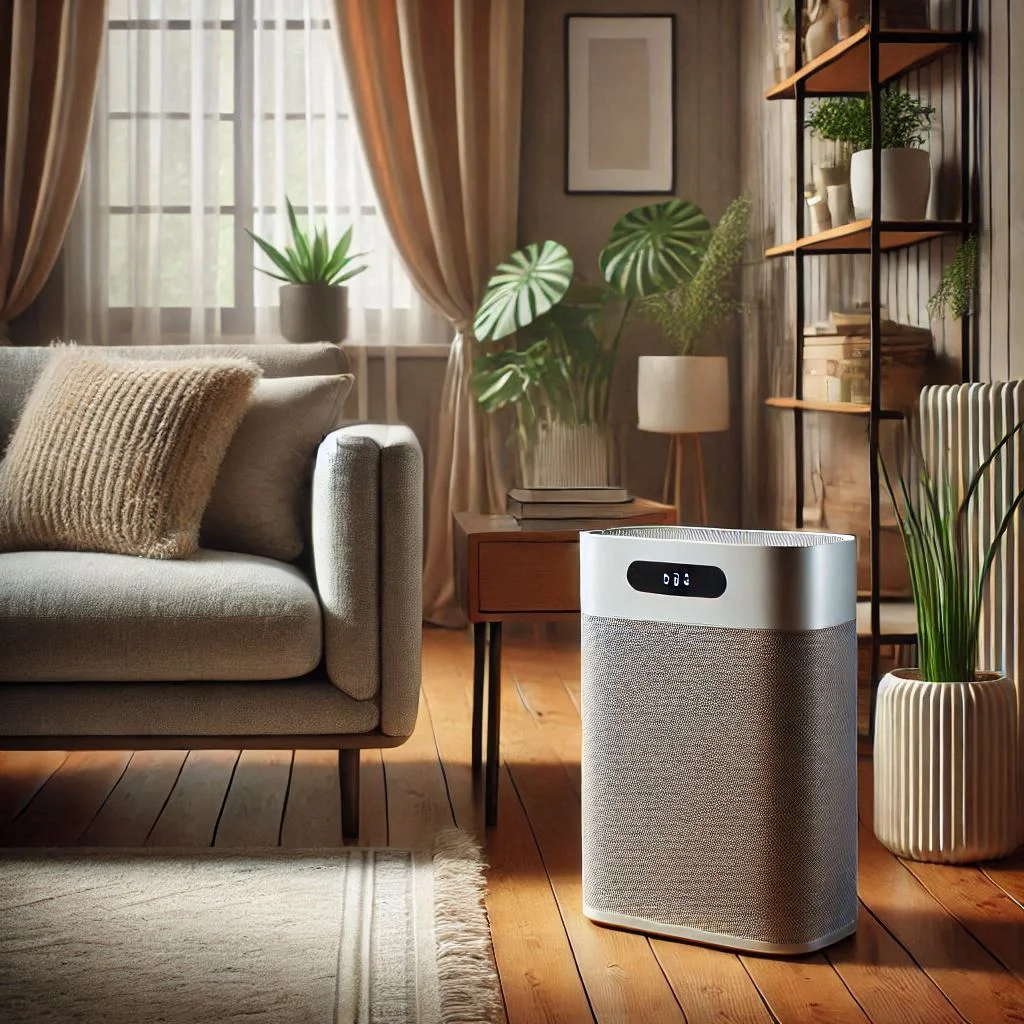
How Does an Air Purifier Work?
Air purifiers operate by drawing in air from their surroundings, passing it through multiple layers of filters, and releasing clean, purified air back into the environment. The primary mechanisms include:
- Pre-Filters: Capture large particles like dust and pet hair.
- HEPA Filters: Trap microscopic particles as small as 0.3 microns, including allergens and bacteria.
- Activated Carbon Filters: Absorb odors, smoke, and volatile organic compounds (VOCs).
- UV-C Technology: Neutralizes airborne pathogens and microorganisms.
These layers work together to create a healthier indoor environment, reducing the concentration of pollutants significantly.
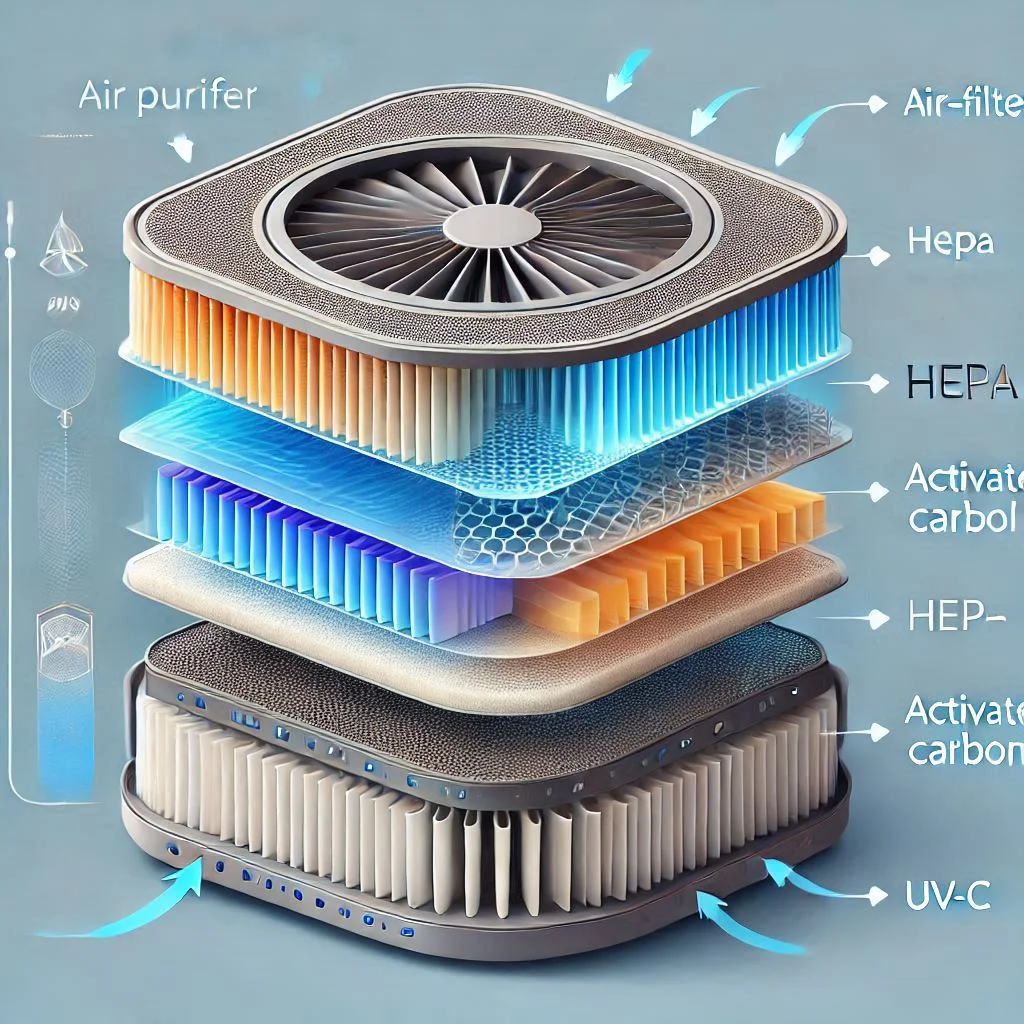
Can Air Purifiers Improve Indoor Air Quality?
Yes, air purifiers are highly effective in improving indoor air quality. They remove airborne pollutants, reducing respiratory irritants and improving overall health. Benefits include:
- Reduction in allergy symptoms caused by pollen or dust.
- Elimination of smoke, pet odors, and cooking smells.
- Mitigation of airborne bacteria and viruses, enhancing hygiene.
- Improvement in sleep quality due to cleaner, fresher air.
However, for optimal performance, the air purifier must be appropriately sized for the room and filters should be replaced regularly.
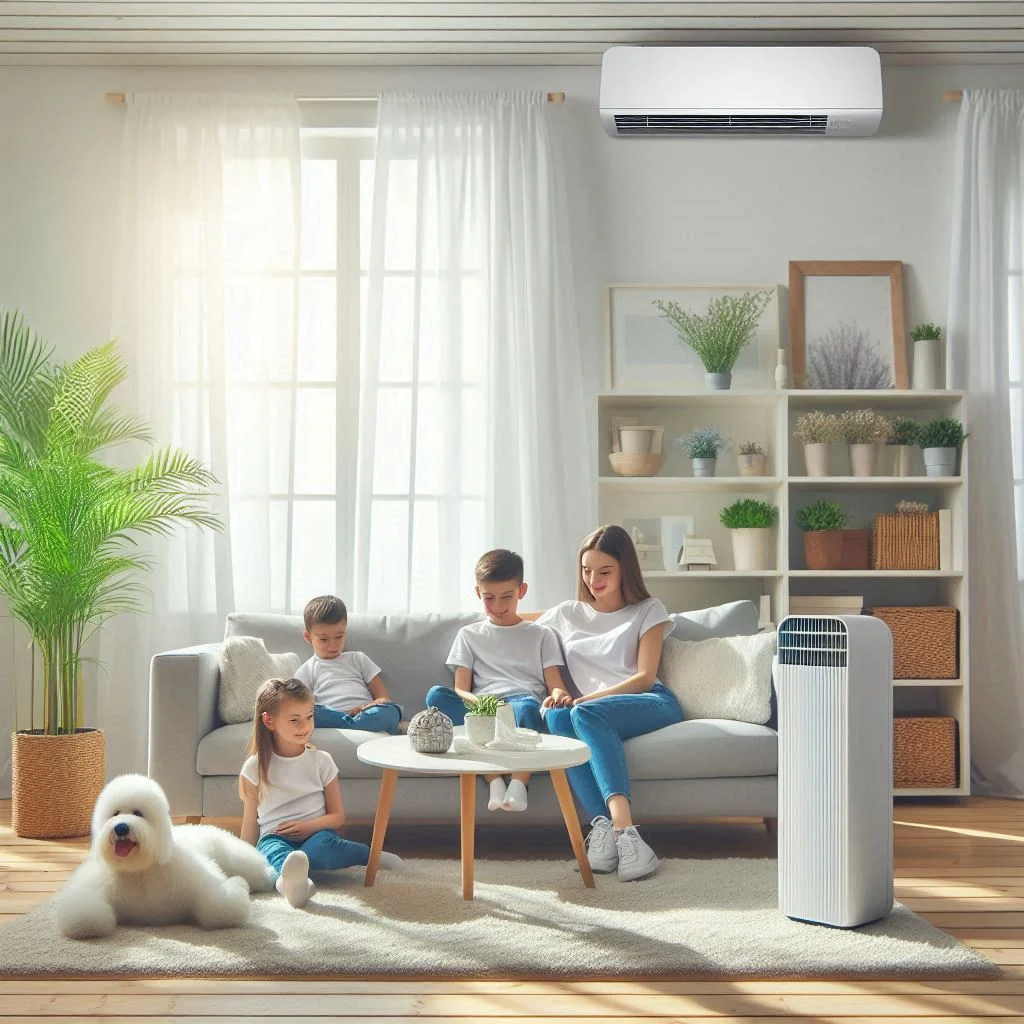
What is an Air Conditioner?
An air conditioner (AC) is a device that cools indoor spaces by removing heat and humidity from the air. AC units are commonly used in homes, offices, and commercial spaces to maintain comfortable temperatures, especially during hot weather. In addition to cooling, modern air conditioners often include basic filtration systems to trap larger particles like dust and lint.
Air conditioners are classified into various types:
- Central Air Conditioning Systems: Cool an entire home or building.
- Window Units: Compact systems installed in a single room window.
- Split Systems: Include an indoor and outdoor unit for efficient cooling.
- Portable Air Conditioners: Mobile units for smaller spaces.
How Does an Air Conditioner Work?
Air conditioners use a refrigeration cycle to cool air. Here’s how they function:
- Compressor: Compresses refrigerant gas, increasing its pressure and temperature.
- Condenser Coils: Dissipate heat from the refrigerant, turning it into a liquid.
- Expansion Valve: Reduces refrigerant pressure, cooling it further.
- Evaporator Coils: Absorb heat from indoor air, cooling it before releasing it back into the space.
This cycle repeats continuously, ensuring the room stays cool and comfortable.
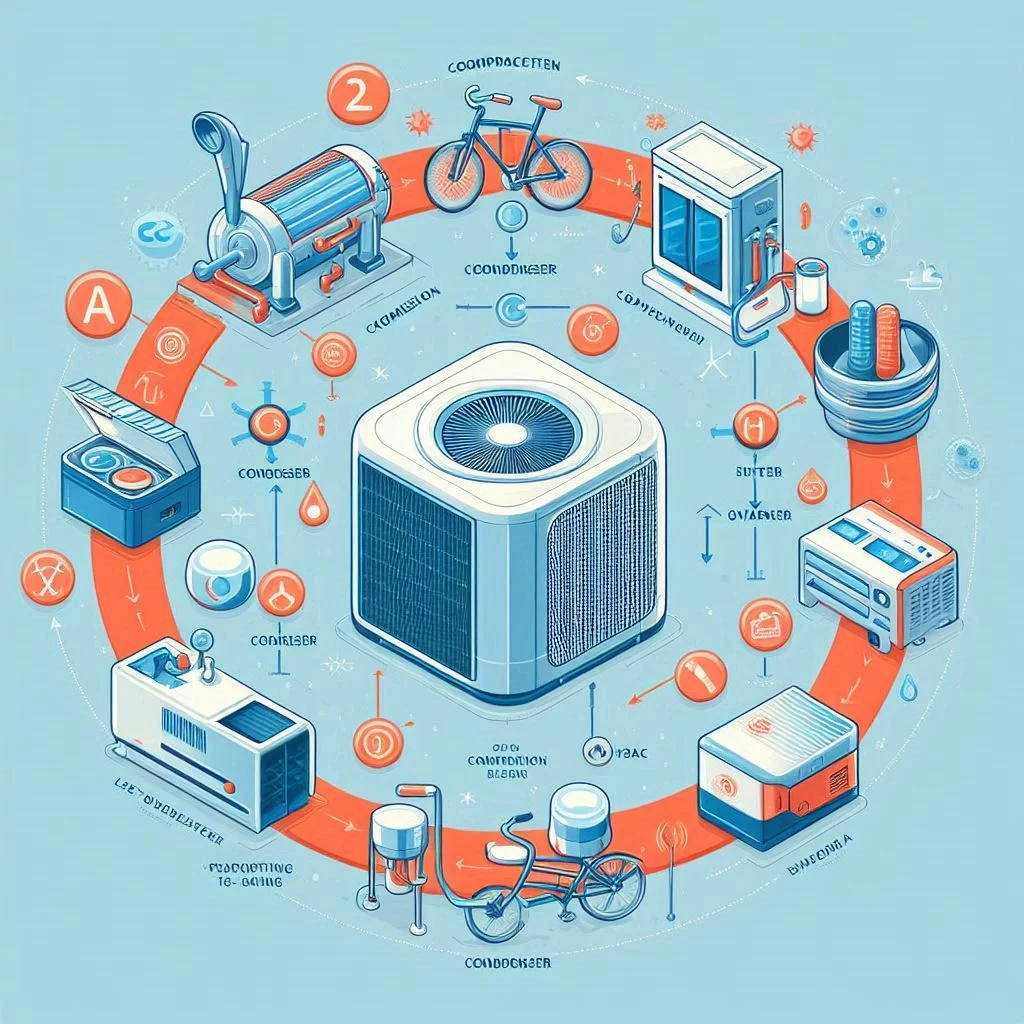
Air Purifiers Vs Air Filters: Key Differences
What is an Air Filter, and How Does it Differ from an Air Purifier?
An air filter is a component commonly used in HVAC systems (like air conditioners and heaters) to trap larger particles such as dust, lint, and pet hair from the air passing through the system. These filters primarily protect the internal components of the HVAC unit and ensure efficient operation. However, their primary goal is not to purify the air completely.
An air purifier, on the other hand, is a standalone device specifically designed to clean the air by removing pollutants, allergens, odors, and even microorganisms. While air filters are a basic necessity for HVAC systems, air purifiers provide comprehensive air cleaning for better health and comfort.
Key Differences:
- Functionality: Air filters primarily protect HVAC equipment, whereas air purifiers focus on improving indoor air quality.
- Pollutants Removed: Air filters handle larger particles, while air purifiers can trap microscopic pollutants, including bacteria and viruses.
- Technology Used: Air filters rely on simple mesh or pleated materials; air purifiers use advanced technologies like HEPA filters, activated carbon, and UV-C light.
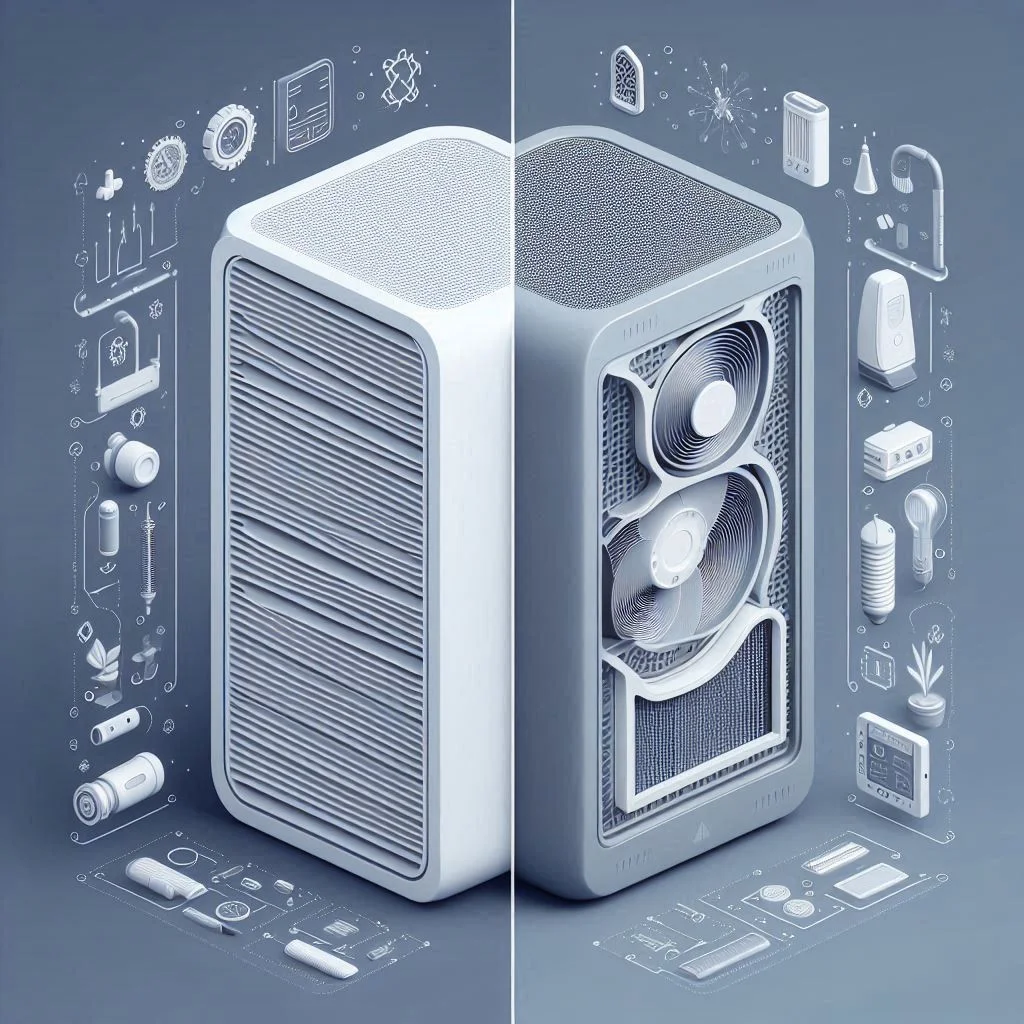
Can Air Filters Trap Pollutants Effectively?
Air filters can effectively trap larger airborne particles, but their ability to remove smaller pollutants is limited. Here are some insights:
- Efficiency Ratings (MERV): Filters are rated on the Minimum Efficiency Reporting Value (MERV) scale, which ranges from 1 to 20. Higher MERV ratings indicate better filtration but may restrict airflow. Most residential HVAC systems use filters with a MERV rating of 8 to 12.
- Limitations: Air filters struggle to capture particles smaller than 1 micron, such as smoke, odors, and viruses. They are also ineffective against volatile organic compounds (VOCs) and harmful gases.
- Maintenance: To maintain efficiency, air filters must be cleaned or replaced regularly, typically every 1–3 months.
While air filters are essential for HVAC systems, they are not a comprehensive solution for improving air quality.
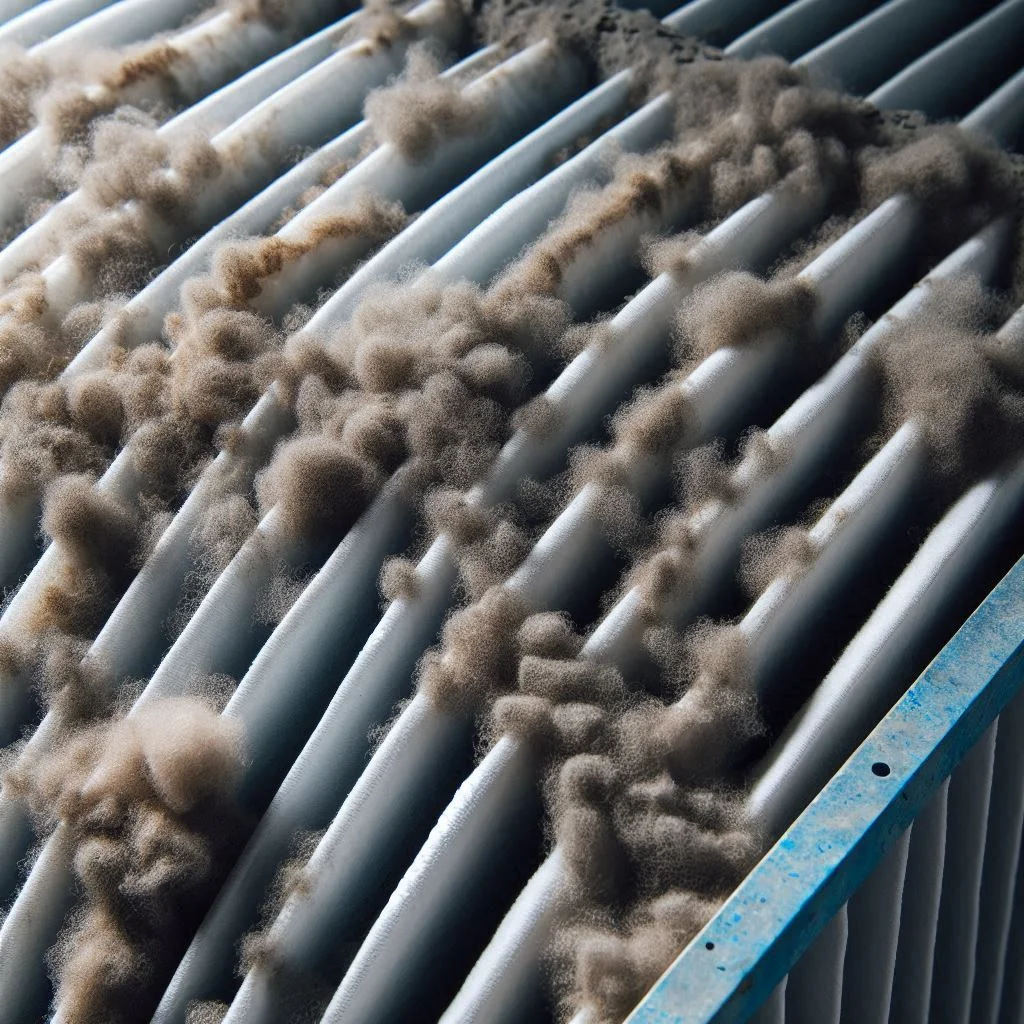
Why Air Purifiers Might Be a Better Choice for Cleaner Air
Air purifiers are designed to provide advanced air cleaning, making them a better choice for those who prioritize health and comfort. Here’s why:
- Advanced Filtration: High-efficiency particulate air (HEPA) filters in air purifiers can capture particles as small as 0.3 microns, including allergens, bacteria, and viruses.
- Odor Removal: Activated carbon filters absorb unpleasant odors, smoke, and chemical fumes.
- Enhanced Health Benefits: Air purifiers improve respiratory health, reduce allergy symptoms, and create a fresher indoor environment.
- Specialized Technology: Some air purifiers come with UV-C light or ionizers to neutralize airborne microorganisms and improve air quality further.
Additionally, air purifiers are independent devices that do not rely on the HVAC system, making them portable and suitable for use in any room.
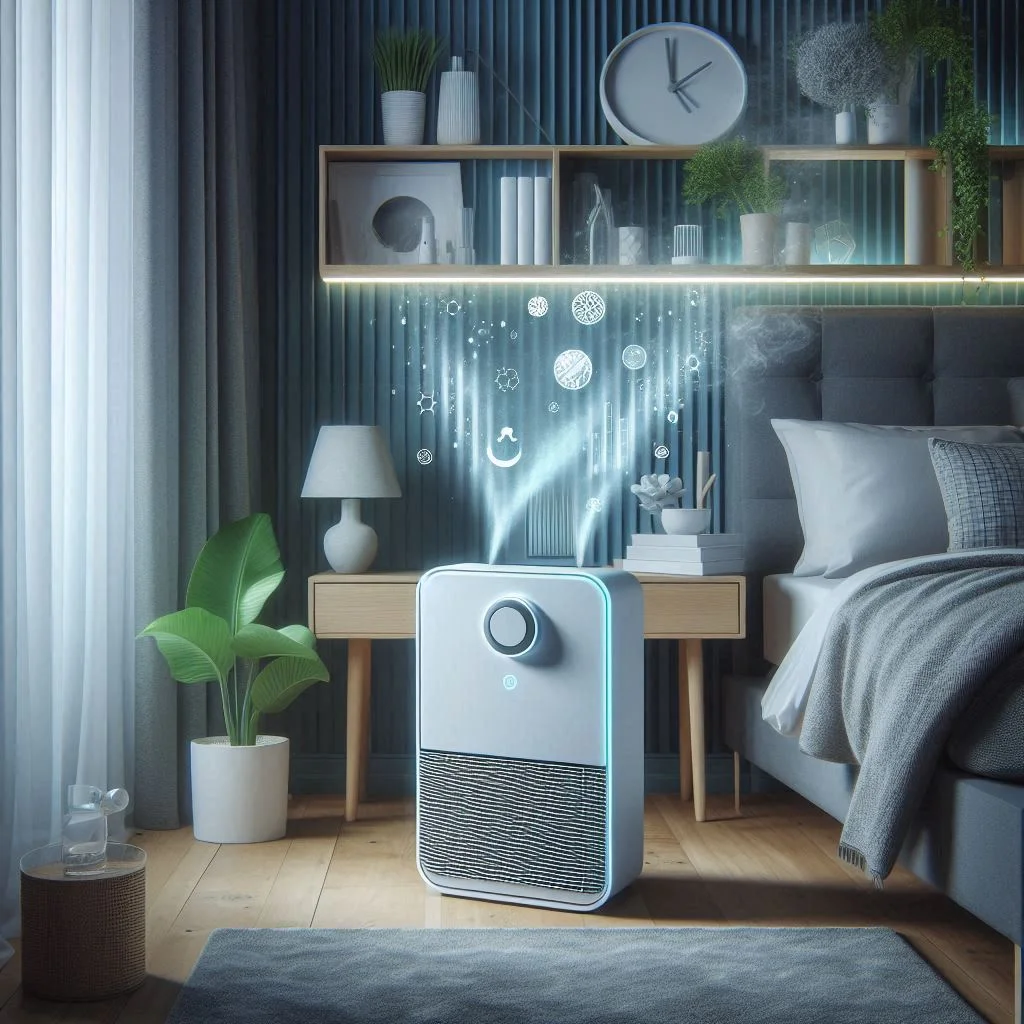
Benefits of Using an Air Purifier with an Air Conditioner
How Air Purifiers Enhance Air Conditioners’ Efficiency
Combining an air purifier with an air conditioner creates a synergy that improves the efficiency and performance of both devices. Here’s how:
- Reduced Strain on AC Filters: Air purifiers capture airborne particles like dust and pet dander before they reach the AC filters, preventing clogging and ensuring smooth airflow.
- Enhanced Cooling Performance: With cleaner air circulating in the system, the AC doesn’t have to work as hard to cool the room, leading to improved energy efficiency and lower electricity bills.
- Extended Lifespan: By keeping the AC filters clean and reducing wear and tear on the system, air purifiers help prolong the life of air conditioning units.
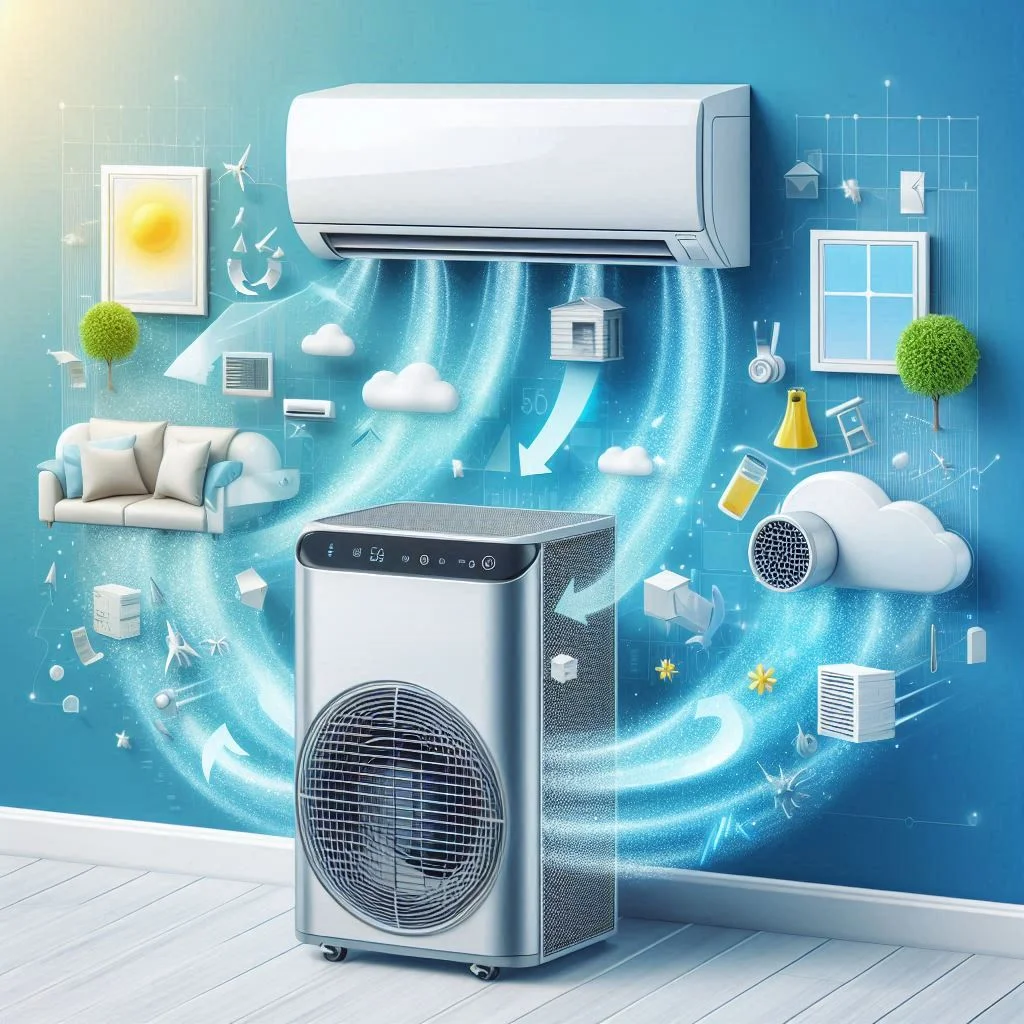
Improving Air Quality with a Combined Setup
While air conditioners primarily cool the air, air purifiers focus on removing contaminants, creating a more comfortable and healthy indoor environment. Here’s why the combination works:
- Comprehensive Air Cleaning: The air purifier captures microscopic pollutants like allergens, bacteria, and VOCs, which the AC filters might miss.
- Balanced Humidity: AC units can reduce humidity, but this can lead to dryness. Air purifiers, especially those with humidifying functions, help maintain balanced air moisture.
- Better Sleep Quality: The combination of cool air from the AC and purified air from the purifier ensures a more restful and comfortable sleep environment.
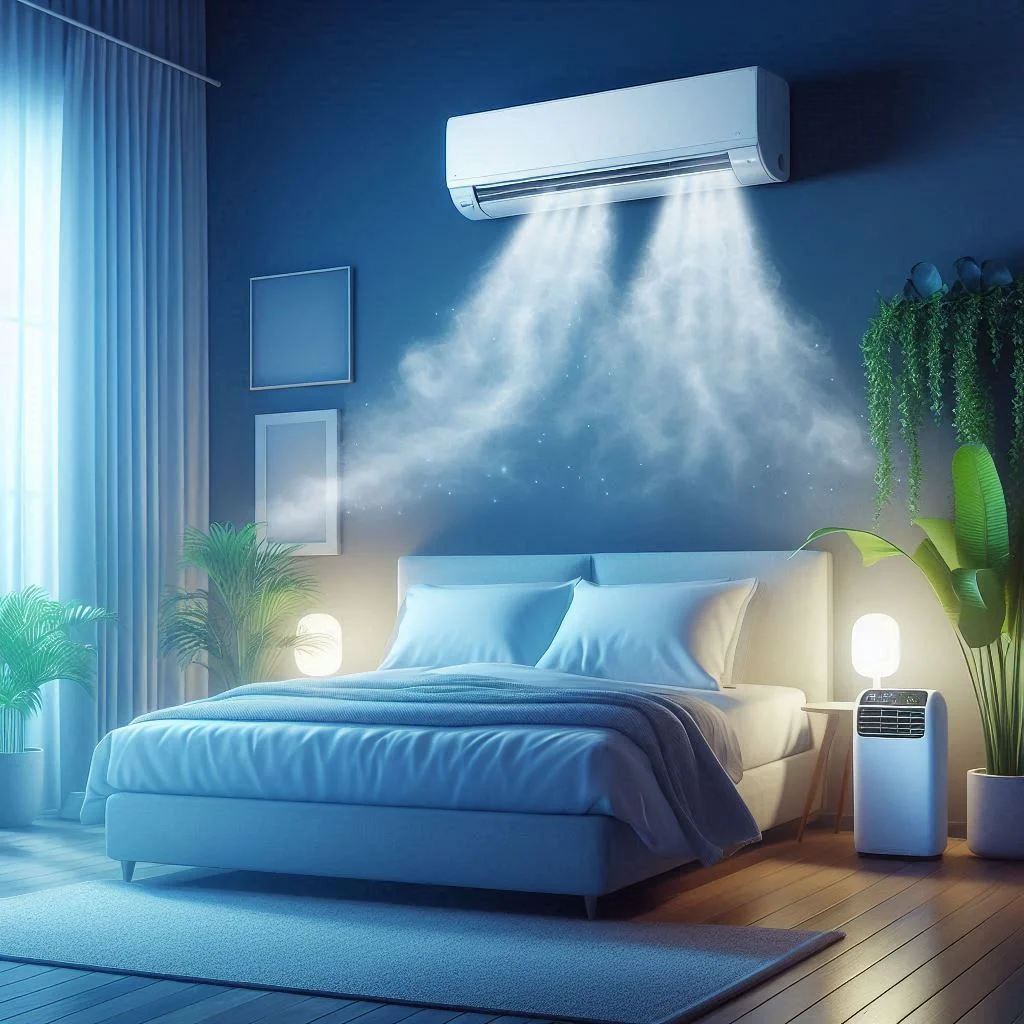
Reducing Allergens, Dust, and Odors with Dual Usage
The dual use of air purifiers and air conditioners is particularly effective in addressing allergens, dust, and odors:
- Allergen Control: Air purifiers equipped with HEPA filters trap common allergens like pollen, mold spores, and dust mites, reducing allergy symptoms.
- Dust Reduction: By continuously filtering the air, purifiers minimize the accumulation of dust on furniture and in the AC system.
- Odor Removal: Activated carbon filters in air purifiers neutralize cooking smells, smoke, and pet odors, creating a fresher environment.
This setup is especially beneficial for households with pets, smokers, or individuals with respiratory issues.
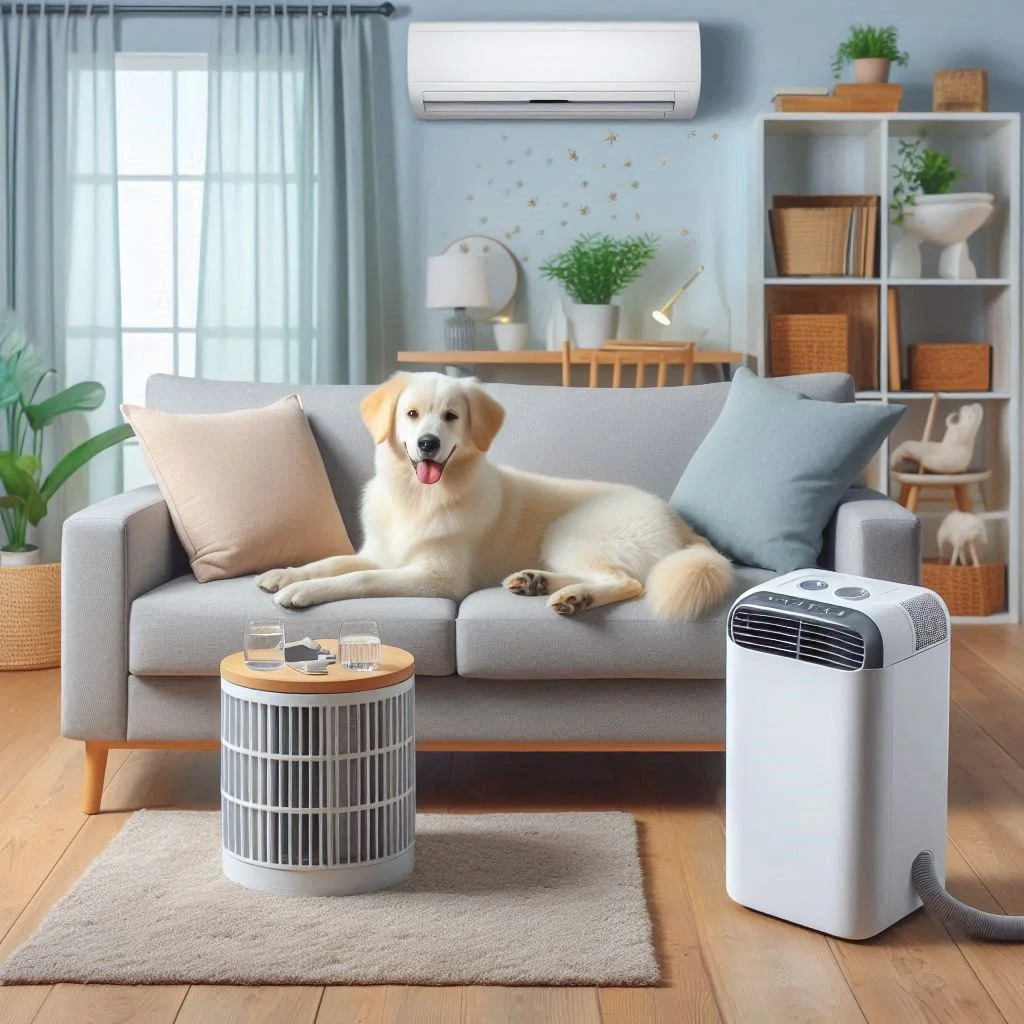
Do Air Purifiers Work Well in Air-Conditioned Rooms?
Common Myths About Using Air Purifiers with Air Conditioners
Many misconceptions exist about the compatibility of air purifiers and air conditioners. Let’s debunk a few:
- Myth: Air purifiers are unnecessary in air-conditioned rooms.
- Fact: While air conditioners cool and circulate air, they do not effectively remove microscopic pollutants like allergens, bacteria, or smoke particles. Air purifiers address this gap by thoroughly cleaning the air.
- Myth: Air purifiers hinder the airflow of air conditioners.
- Fact: Air purifiers work independently of the AC system and have no impact on its airflow. Instead, they enhance indoor air quality by removing pollutants that AC filters cannot.
- Myth: Using both devices simultaneously consumes excessive energy.
- Fact: Modern air purifiers are energy-efficient, and the improved efficiency of the AC (due to cleaner air) often offsets any additional energy use.
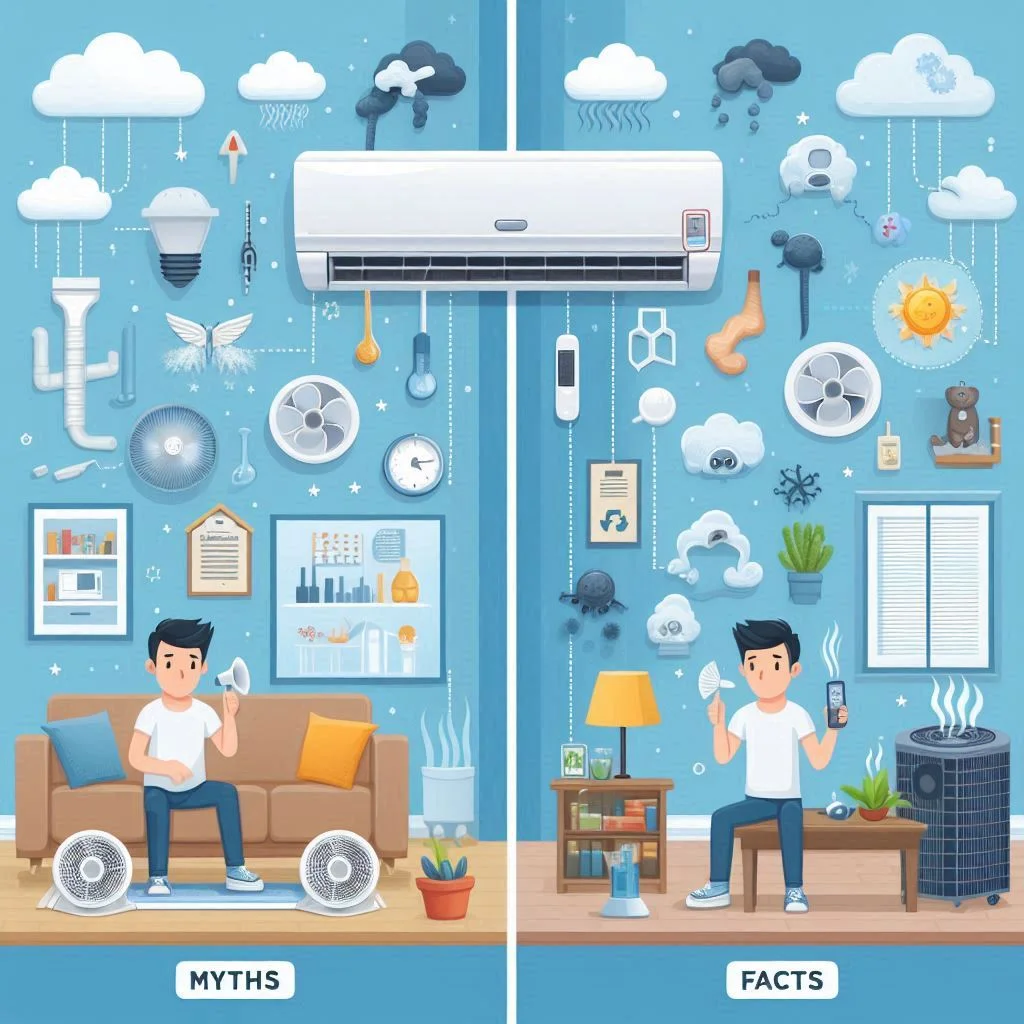
How Air Purifiers Complement Air Conditioners in Cooling and Air Cleaning
Air purifiers and air conditioners form an ideal partnership for a comfortable and healthy indoor environment. Here’s how they complement each other:
- Improved Indoor Air Quality: Air conditioners cool the air, while air purifiers remove pollutants, allergens, and odors, ensuring the air is not only comfortable but also clean.
- Efficient Cooling: Clean air enhances the cooling efficiency of the AC. Pollutants like dust and dander can clog AC filters, reducing performance, but air purifiers help prevent this.
- Balanced Humidity: Some air purifiers have added humidifying or dehumidifying functions that balance the humidity levels reduced by air conditioners, preventing overly dry or damp air.
- Health Benefits: Together, these devices create an environment that minimizes respiratory irritants, improving health and comfort, especially for allergy sufferers or individuals with asthma.
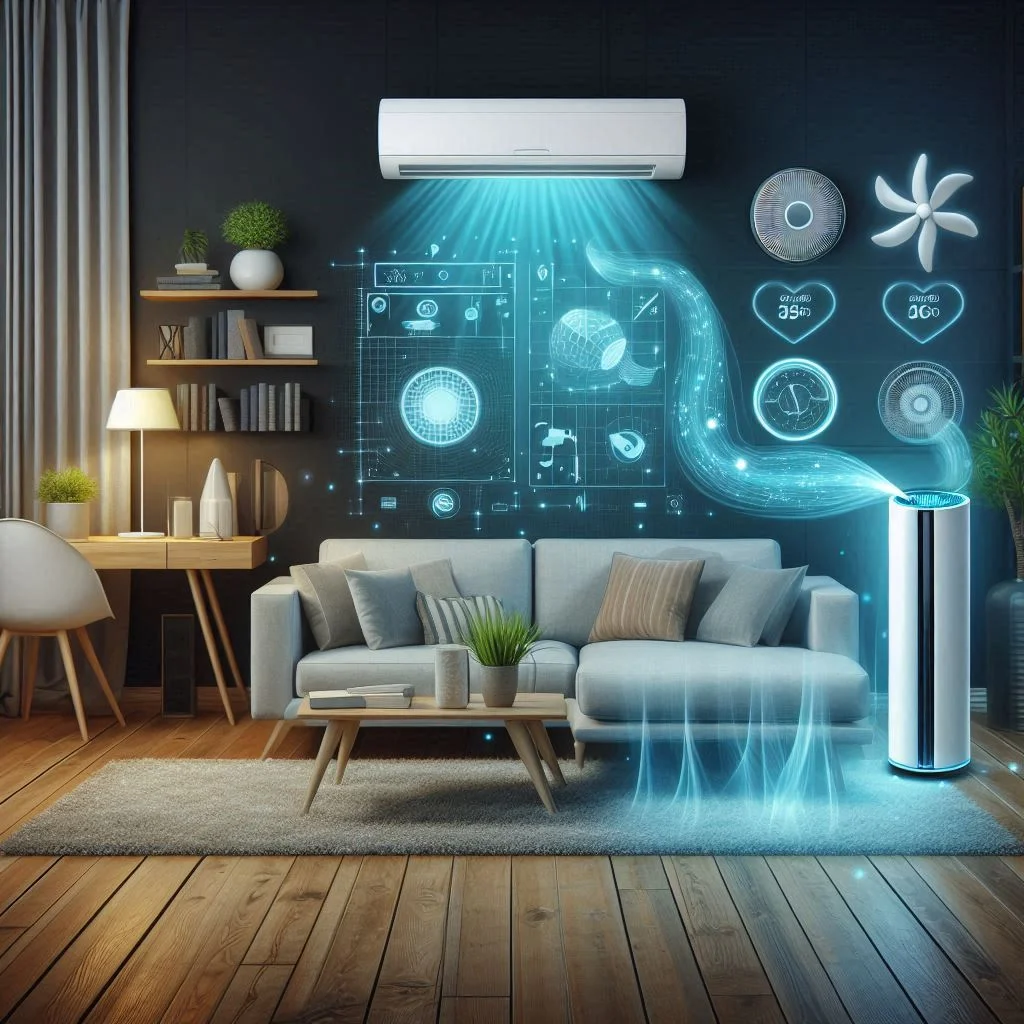
Scenarios When Air Purifiers Might Not Perform Effectively
Although air purifiers are highly effective in air-conditioned rooms, certain conditions can limit their performance:
- Improper Placement: If an air purifier is placed in a corner or behind furniture, airflow may be restricted, reducing its cleaning efficiency.
- Incompatible Room Size: Using an air purifier with a capacity too small for the room may lead to inadequate air cleaning. Always choose an air purifier rated for the size of the space.
- Neglected Maintenance: Dirty filters reduce an air purifier’s performance. Regular cleaning or replacement of filters is essential for optimal results.
- Severe Pollution: In cases of extremely high pollution levels (e.g., wildfire smoke or industrial emissions), a single air purifier may struggle. Combining multiple units or upgrading to advanced systems can help.
To maximize effectiveness, always pair the right air purifier with an appropriately functioning air conditioner and maintain both regularly.
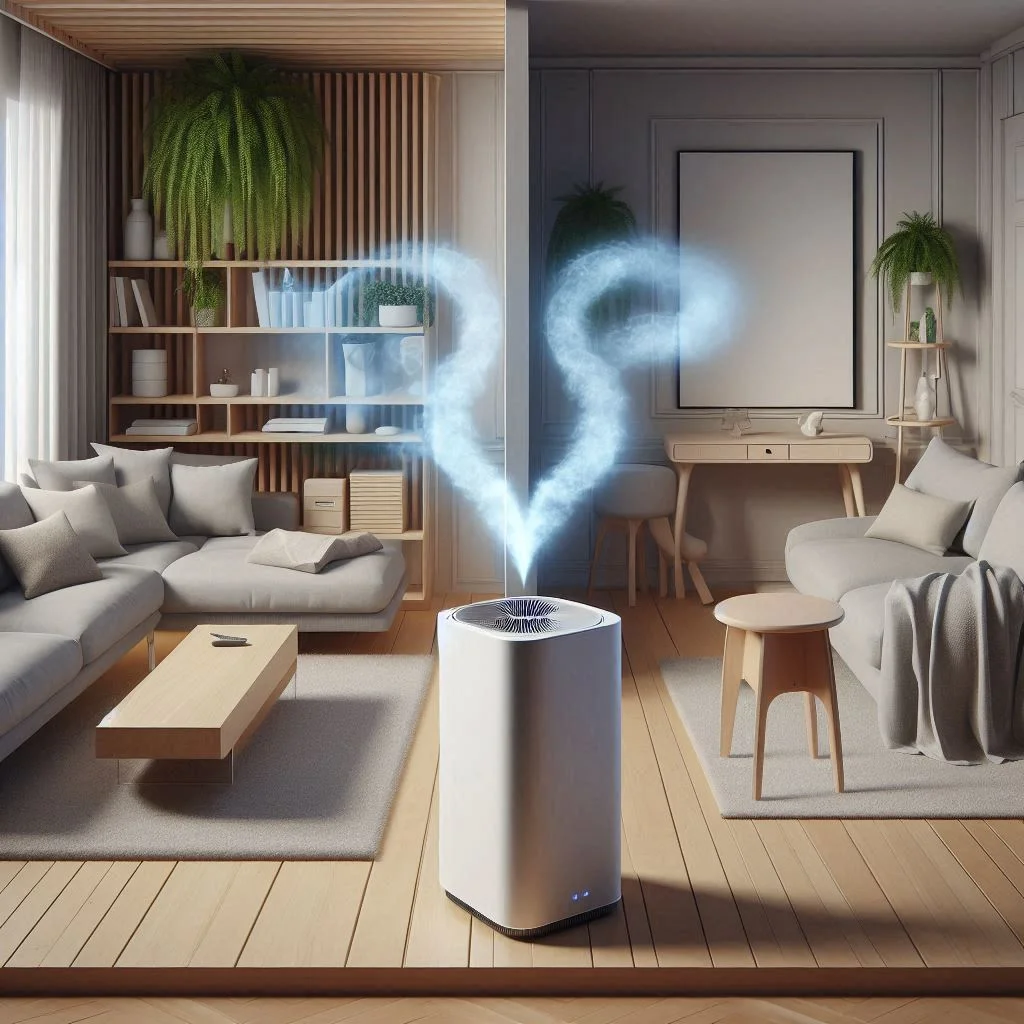
Maintenance Tips for Optimal Performance
Cleaning and Replacing Air Purifier and Air Conditioner Filters
Maintaining clean filters is crucial for the optimal performance of both air purifiers and air conditioners. Here’s how to ensure peak efficiency:
- Air Purifier Filters:
- HEPA Filters: These should be checked every 2–3 months and replaced every 6–12 months, depending on usage and air quality. A clogged HEPA filter reduces the purifier’s ability to capture fine particles.
- Activated Carbon Filters: Replace these every 3–6 months to maintain effective odor and gas removal.
- Pre-Filters: Wash or vacuum these monthly to prevent debris buildup and extend the life of other filters.
- Air Conditioner Filters:
- Disposable Filters: Replace every 1–3 months, especially during heavy use in summer.
- Washable Filters: Rinse these monthly with water and let them dry completely before reinstalling.
- Professional Servicing: Schedule professional AC maintenance at least once a year to inspect and clean internal components like coils and ducts.
Regular maintenance ensures better airflow, energy efficiency, and prolonged device lifespan.
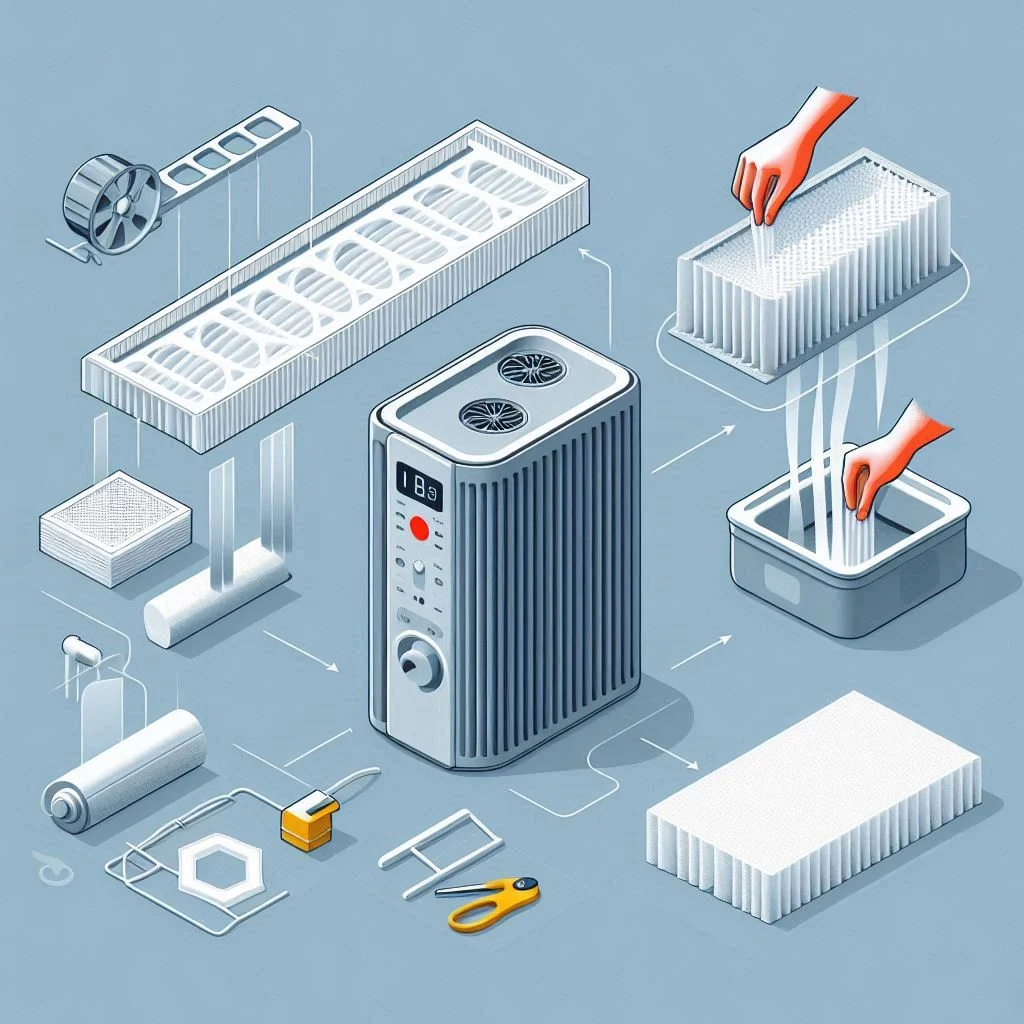
Tips for Running Both Devices Simultaneously
To maximize the benefits of using an air purifier and air conditioner together:
- Place Devices Strategically: Position the air purifier in the center of the room or near areas with the most airflow from the AC. This ensures better air circulation and coverage.
- Set Compatible Fan Speeds: Keep the air purifier on a medium or high setting while running the AC to optimize pollutant removal.
- Close Windows and Doors: Sealing the room minimizes the entry of external pollutants, enabling both devices to work more effectively.
- Choose Energy-Efficient Models: Modern air purifiers and air conditioners come with energy-saving modes that reduce electricity consumption while maintaining performance.
- Sync Usage with Smart Devices: Some air purifiers and AC units can be connected to smart home systems for automated scheduling and energy management.
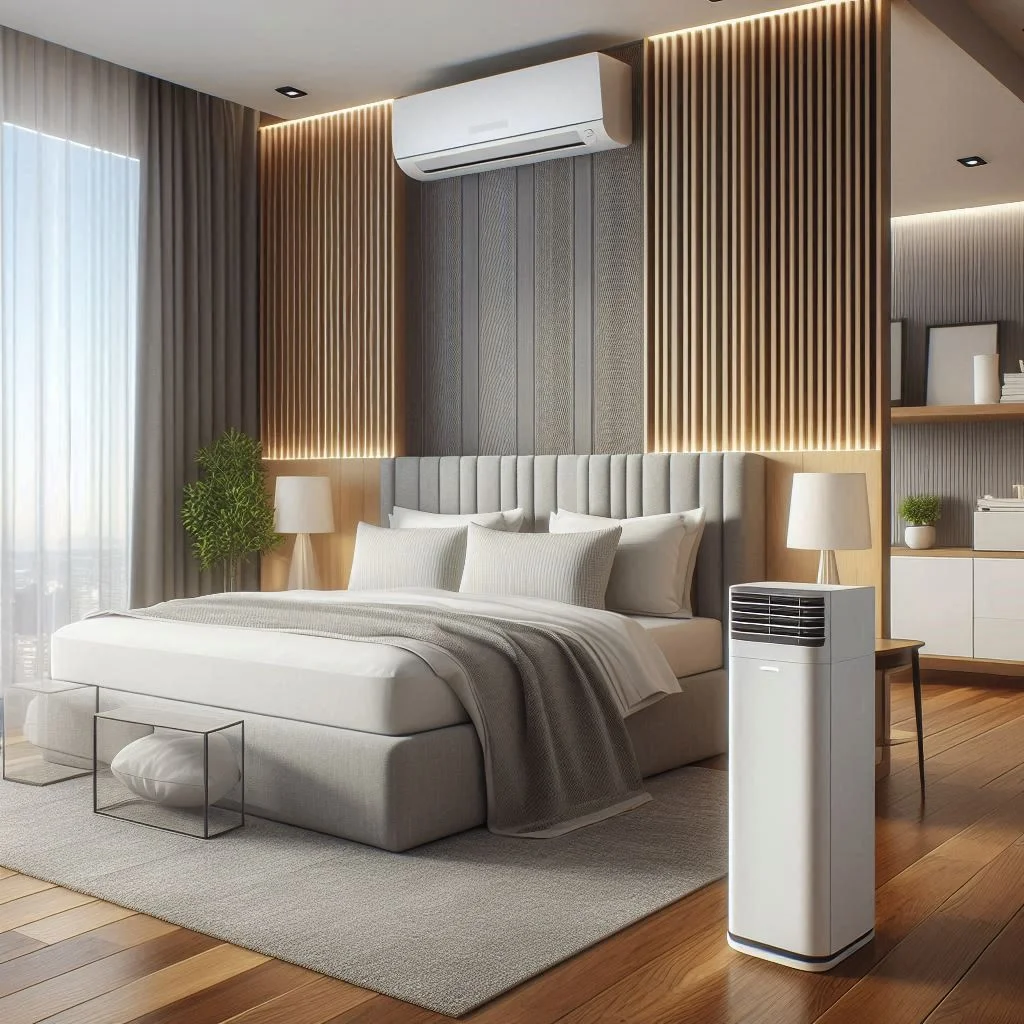
Importance of Regular Maintenance for Indoor Air Quality
Neglecting maintenance not only reduces the performance of your devices but also impacts indoor air quality and health:
- Prevents Pollutant Buildup: Dirty filters can become a source of contaminants, recirculating dust, allergens, and bacteria into the air.
- Improves Energy Efficiency: Clean filters and components require less energy to operate, lowering utility bills.
- Reduces Health Risks: Properly maintained devices help minimize respiratory issues caused by allergens, mold, and VOCs.
- Extends Device Lifespan: Regular cleaning and professional inspections prevent wear and tear, saving money on repairs and replacements.
Create a maintenance schedule for both devices, including routine cleaning and professional servicing, to ensure optimal air quality year-round.
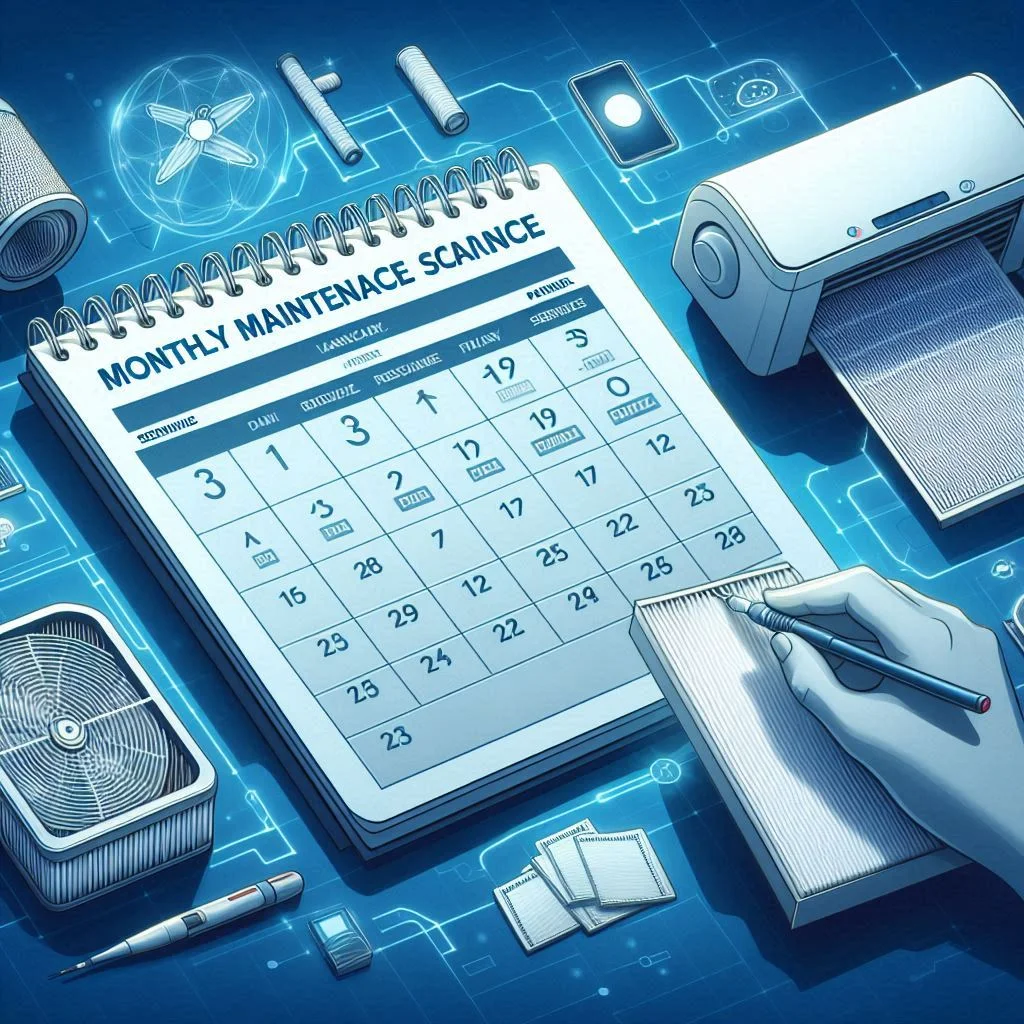
Choosing the Right Setup for Your Home
Factors to Consider When Buying an Air Purifier and Air Conditioner
Choosing the right air purifier and air conditioner involves understanding your specific needs and room requirements. Here are the key factors to consider:
- Room Size:
- Match the device’s capacity to the size of the room.
- Air purifiers list a Clean Air Delivery Rate (CADR) to indicate their effectiveness for specific room sizes.
- AC units are rated in BTUs (British Thermal Units), and a higher BTU is needed for larger spaces.
- Air Quality Needs:
- For households with pets or allergies, opt for air purifiers with HEPA and activated carbon filters.
- In areas with high humidity, consider an AC with dehumidifying capabilities.
- Noise Levels:
- Check the noise ratings (measured in decibels). Devices with low noise settings are better for bedrooms and offices.
- Energy Efficiency:
- Look for Energy Star-rated models to save on electricity bills.
- Devices with smart features, such as timers and eco-modes, offer additional energy savings.
- Maintenance Requirements:
- Choose models with easy-to-replace filters or washable components.
- Consider the cost and frequency of filter replacements when budgeting.
- Aesthetic and Portability:
- Modern devices come in sleek designs that blend with home interiors. Portable units offer flexibility for use in multiple rooms.
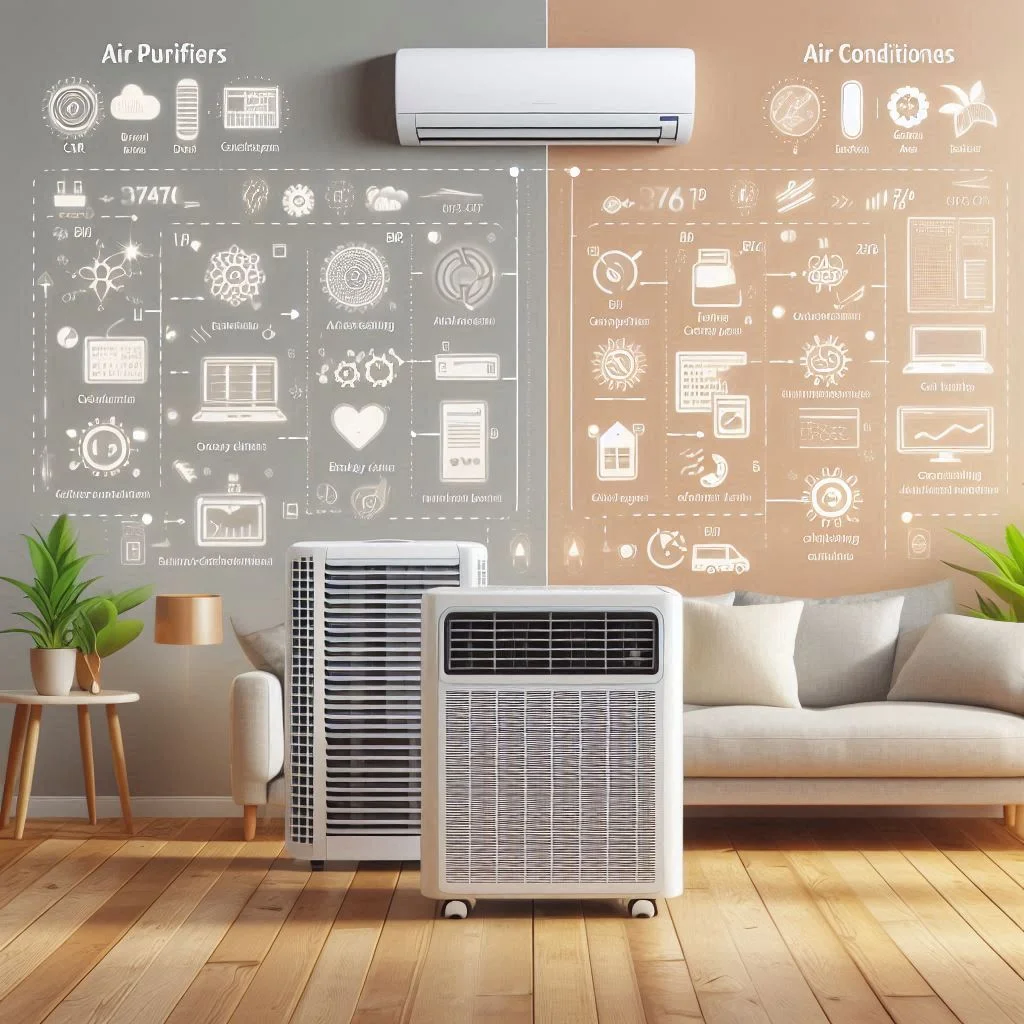
Cost Efficiency: Are Expensive Devices Worth It?
Investing in high-quality air purifiers and air conditioners can seem costly upfront, but the long-term benefits often outweigh the initial expense:
- Durability and Performance:
- Premium devices typically use better materials and technologies, offering longer lifespans and more effective performance.
- Advanced models with HEPA filters, activated carbon layers, or UV light technology provide superior air cleaning.
- Energy Savings:
- While expensive devices may cost more to purchase, they often consume less energy, leading to significant savings over time.
- Features like smart sensors and programmable settings help optimize usage and reduce electricity bills.
- Health Benefits:
- High-end models are more efficient at removing allergens, bacteria, and other pollutants, making them ideal for people with respiratory issues or allergies.
- The improved air quality reduces the likelihood of health-related expenses caused by poor indoor air.
- Customization and Convenience:
- Premium devices often come with advanced features like remote control, Wi-Fi connectivity, and app-based monitoring, enhancing user convenience.
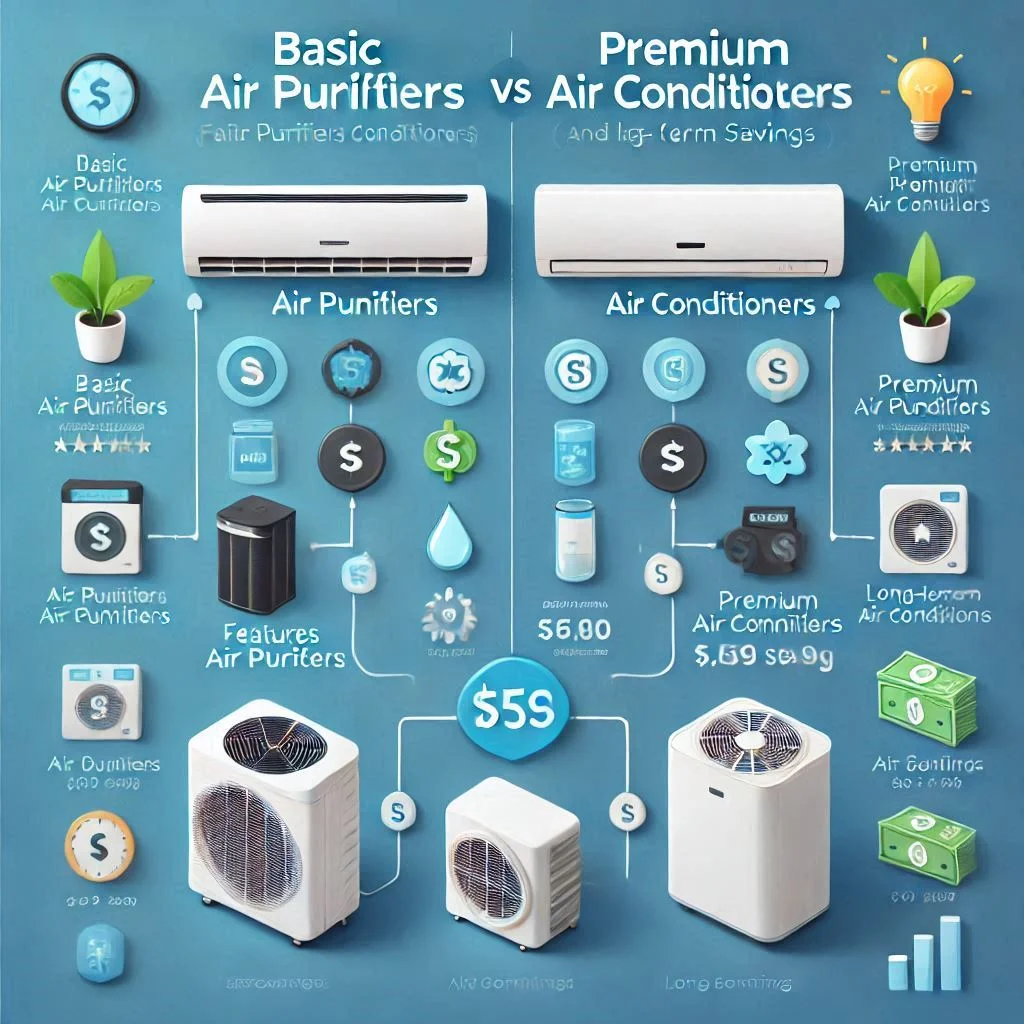
How to Test and Measure Indoor Air Quality Improvements
After setting up your air purifier and air conditioner, it’s important to evaluate their impact on indoor air quality. Here’s how:
- Use an Air Quality Monitor:
- Devices like PM2.5 meters or CO2 monitors can measure particulate matter, humidity, and pollutant levels.
- Track improvements before and after running the air purifier and AC.
- Check for Allergy Relief:
- Monitor symptoms like sneezing, congestion, or asthma attacks in household members. A reduction indicates improved air quality.
- Observe Dust Accumulation:
- Reduced dust on furniture and floors is a clear sign of effective air filtration.
- Odor Removal:
- A fresher-smelling home, especially in kitchens or pet areas, signals that the air purifier’s carbon filter is working.
- Regular Maintenance Reports:
- Smart devices often provide reports on air quality improvements, filter life, and operational efficiency.
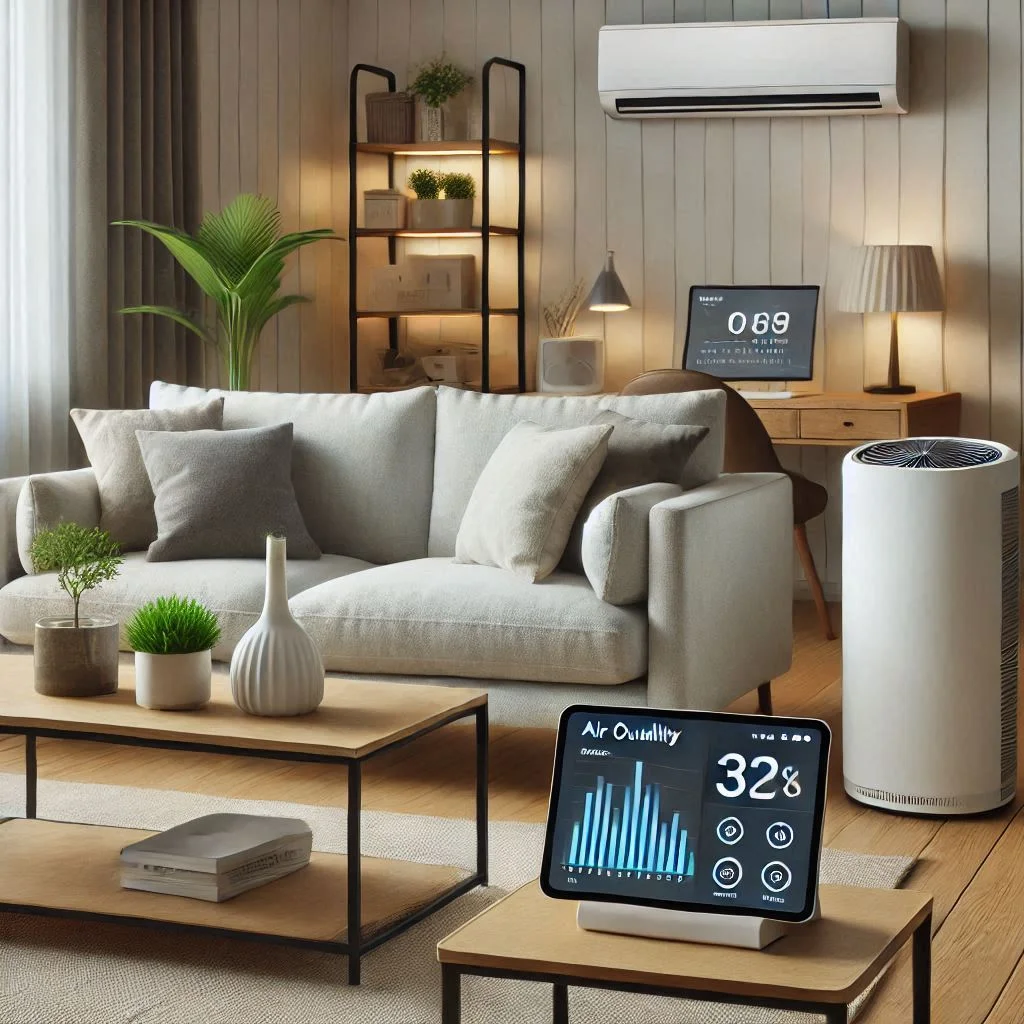
FAQs: Using Air Purifiers and Air Conditioners Together
Q: Can I use an air purifier and air conditioner together?
A: Absolutely. Combining an air purifier with an air conditioner enhances both indoor air quality and cooling efficiency.
- The air conditioner focuses on controlling temperature and humidity, while the air purifier removes airborne pollutants like dust, allergens, and odors.
- Together, these devices provide a comfortable and healthy indoor environment, especially in areas with poor air quality or during allergy seasons.
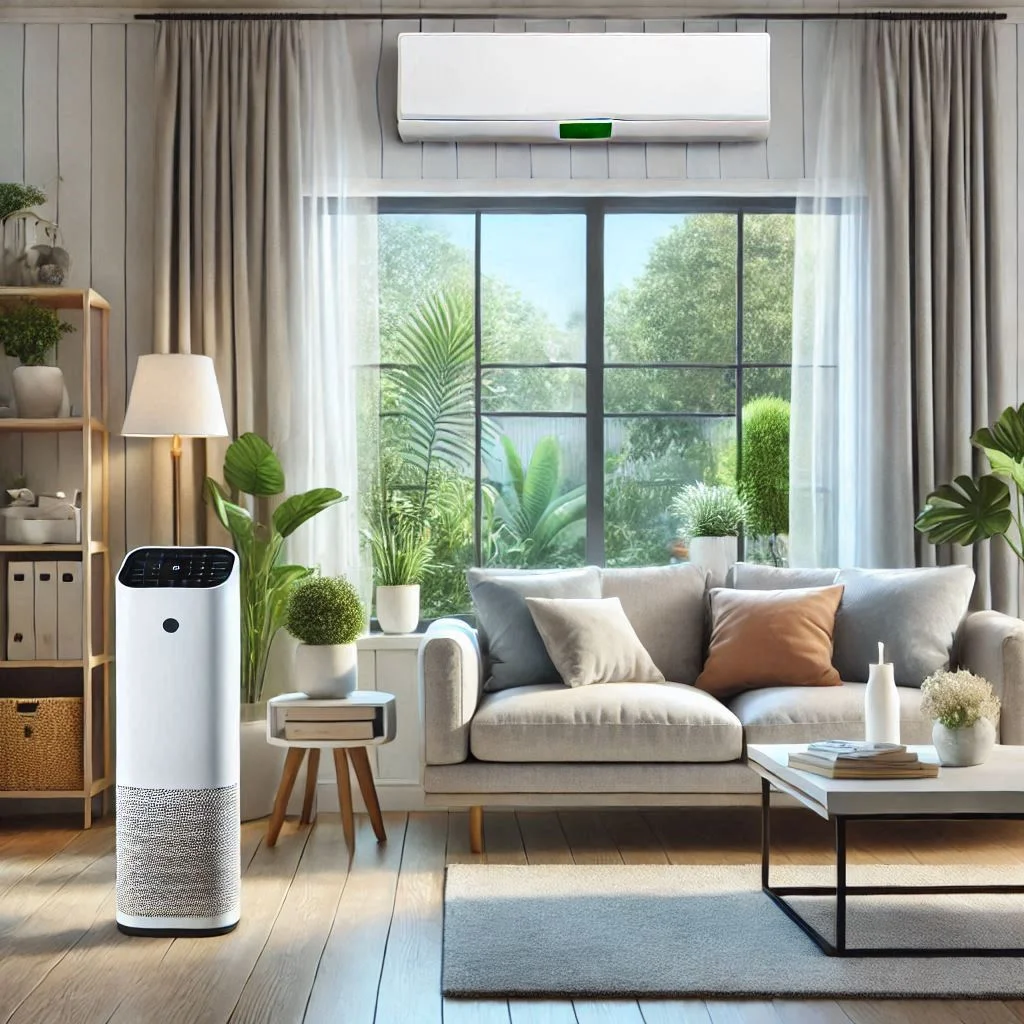
Q: Do air conditioners have built-in air purifiers?
A: Some modern air conditioning units come equipped with advanced filters or air purification features, such as:
- Electrostatic Filters: Trap small particles like dust and pollen.
- Activated Carbon Filters: Absorb odors and certain gases.
- UV Light Technology: Helps neutralize bacteria and viruses.
However, these built-in systems are not as comprehensive as dedicated air purifiers. For optimal air cleaning, using a standalone air purifier alongside an air conditioner is recommended.
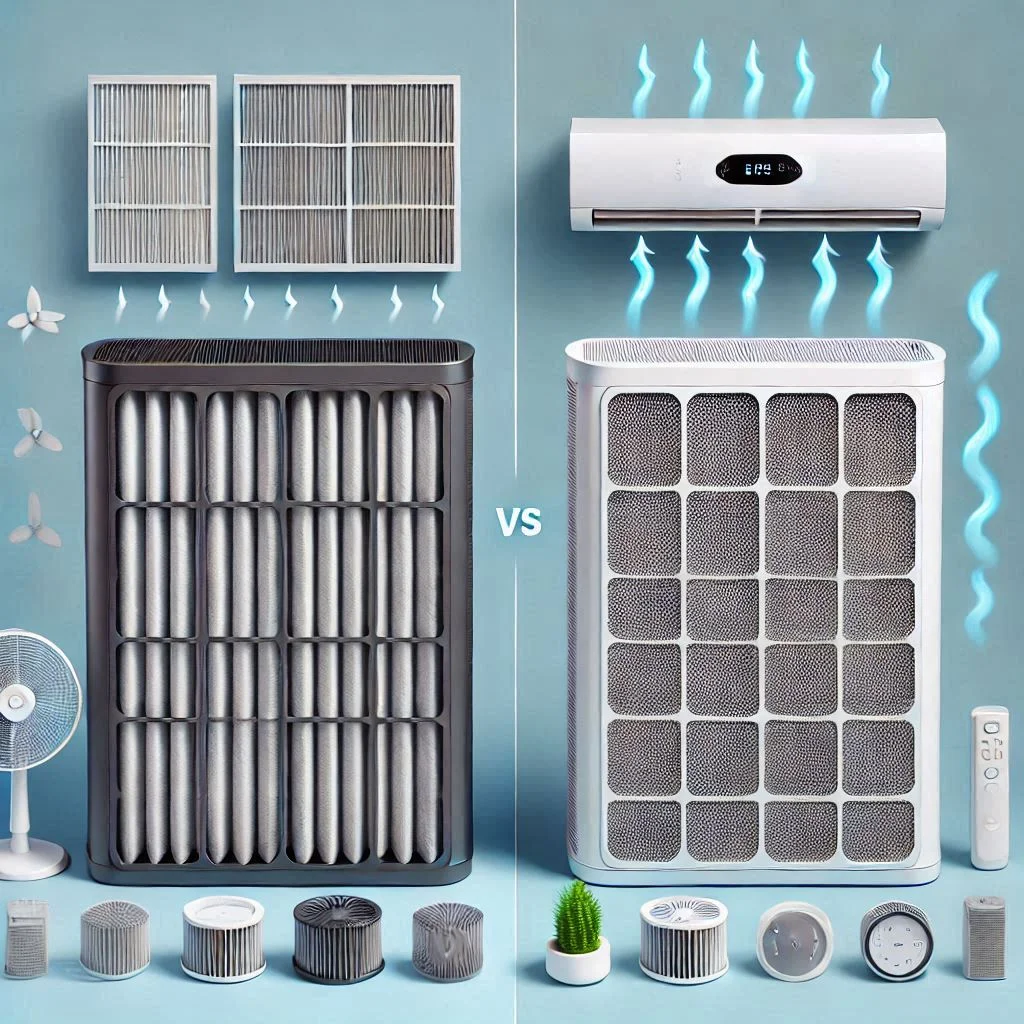
Q: Will running both devices increase energy consumption?
A: Yes, running an air purifier and air conditioner together will slightly increase energy usage. However, the benefits far outweigh the cost, especially with energy-efficient models:
- Look for Energy Star-rated air purifiers and AC units to minimize electricity consumption.
- Use smart features like timers and eco-modes to optimize usage during peak and off-peak hours.
- Keep the devices well-maintained to ensure they run efficiently, saving energy over time.
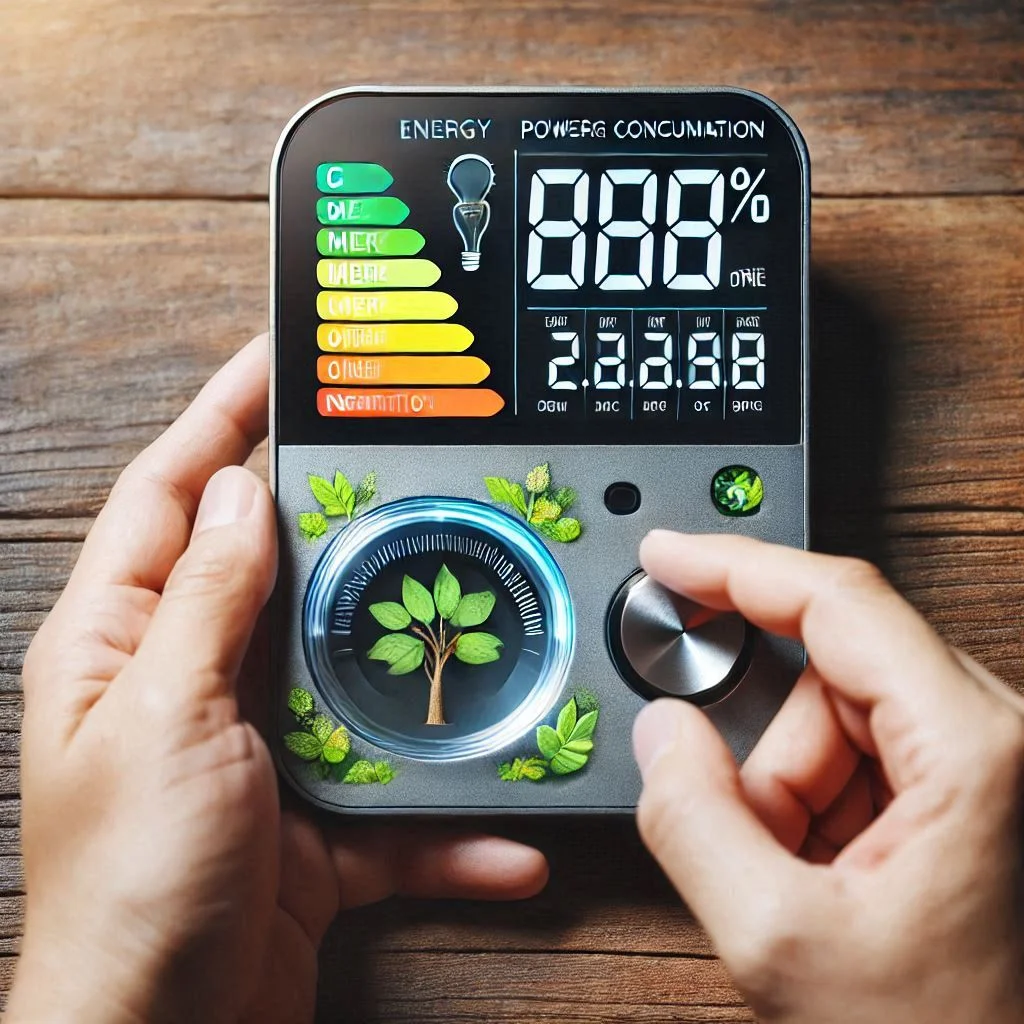
Q: Can air purifiers remove viruses when used with air conditioners?
A: Yes, high-quality air purifiers with HEPA filters can trap airborne particles as small as 0.3 microns, including certain viruses. When used with an air conditioner:
- The purifier removes contaminants from the air, while the AC maintains a comfortable temperature and reduces humidity, which can inhibit virus survival.
- UV light technology in some air purifiers adds an extra layer of protection by neutralizing germs and viruses.
This combination is particularly beneficial in shared spaces or during flu seasons, ensuring a safer and healthier indoor environment.
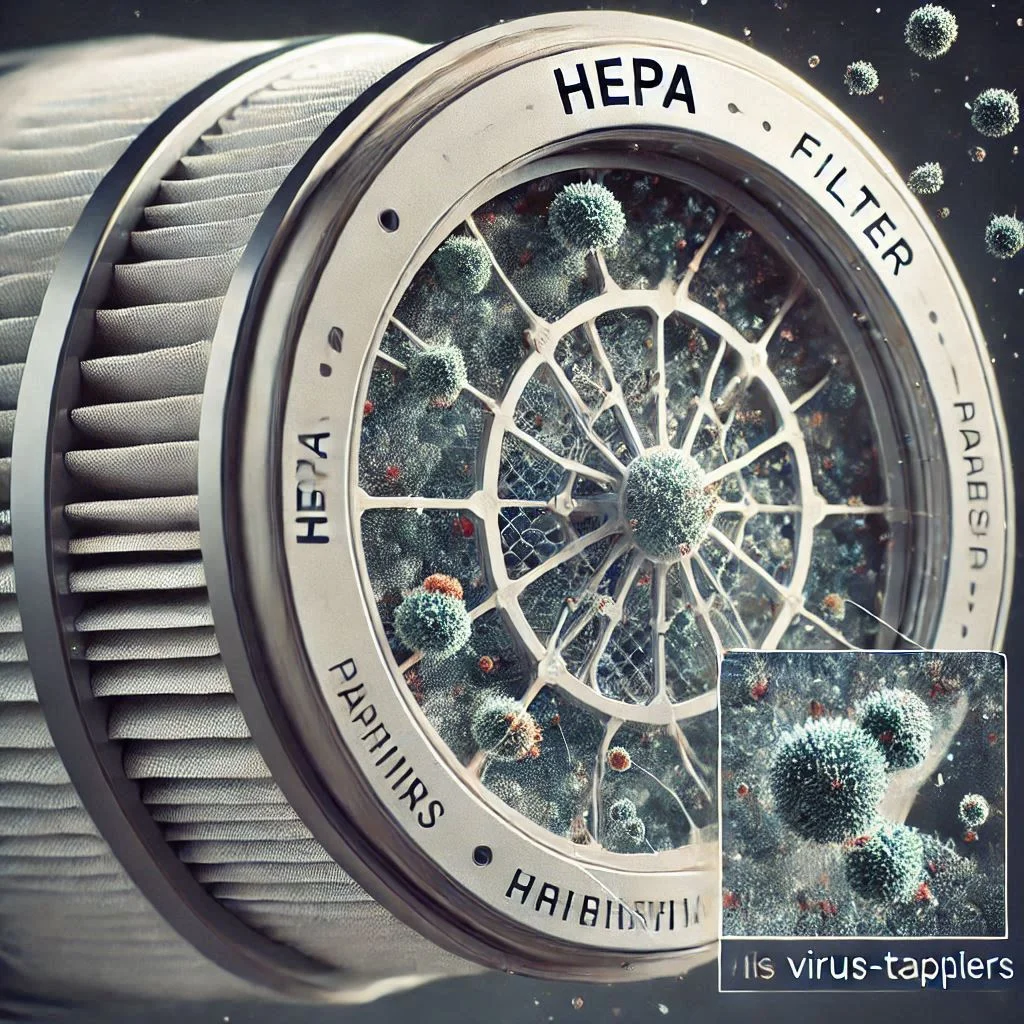
Q: How often should I replace filters in a combined setup?
A: Regular filter maintenance is critical for the optimal performance of both devices:
- Air Purifier Filters:
- HEPA filters should be replaced every 3–6 months, depending on usage and air quality.
- Pre-filters need cleaning or vacuuming monthly to prolong the life of other filters.
- Air Conditioner Filters:
- Wash reusable AC filters monthly and replace disposable ones every 1–3 months during heavy usage.
Neglecting filter maintenance reduces airflow, increases energy consumption, and diminishes the air-cleaning effectiveness of both devices.
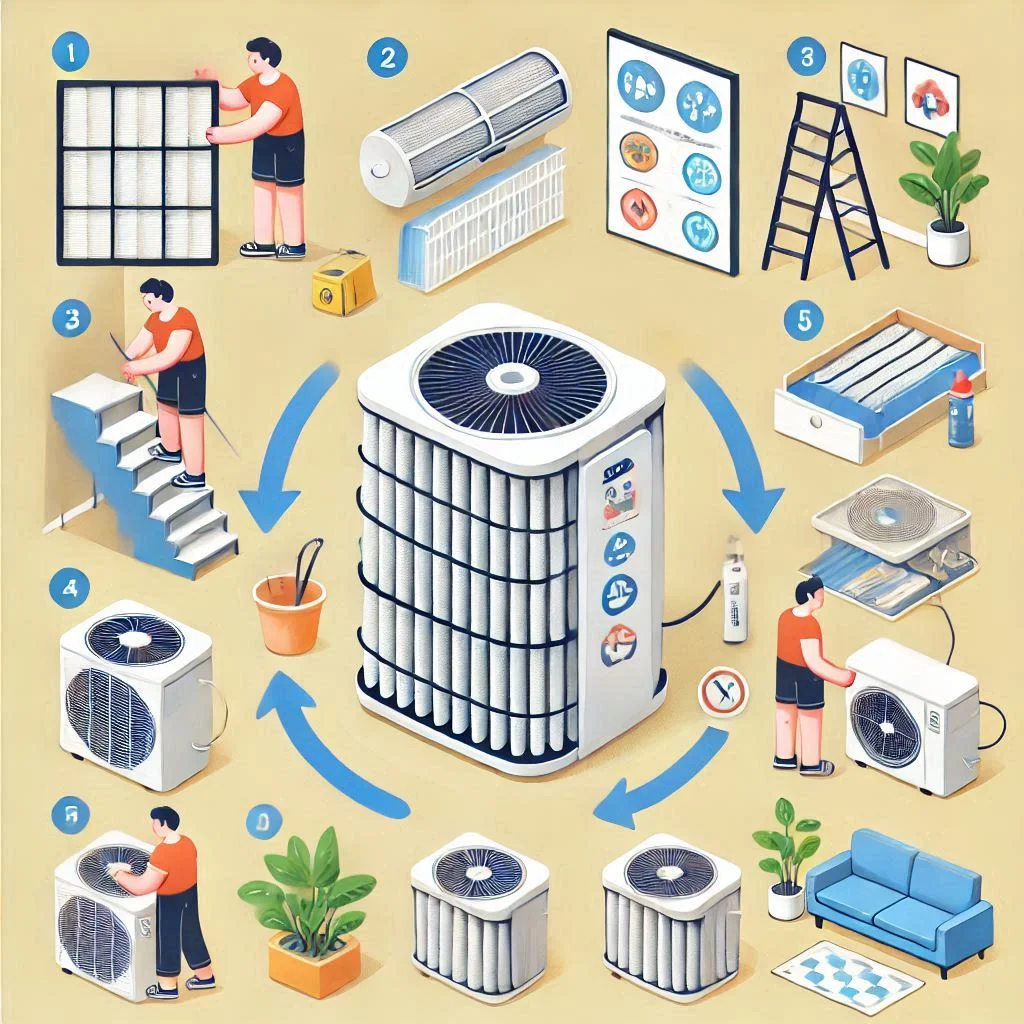
Conclusion
Combining an air purifier with an air conditioner is a powerful way to create a healthier, more comfortable indoor environment. While air conditioners maintain optimal temperature and humidity levels, air purifiers enhance air quality by removing pollutants, allergens, and odors. By understanding their distinct roles, choosing the right devices, and maintaining them properly, you can enjoy cleaner, fresher air with improved efficiency. Whether you’re looking to reduce allergens, combat odors, or enhance your overall comfort, this dynamic duo offers a cost-effective and energy-efficient solution for any home. Invest in your indoor air quality today, and breathe easier knowing your home is a sanctuary of clean, cool air.

